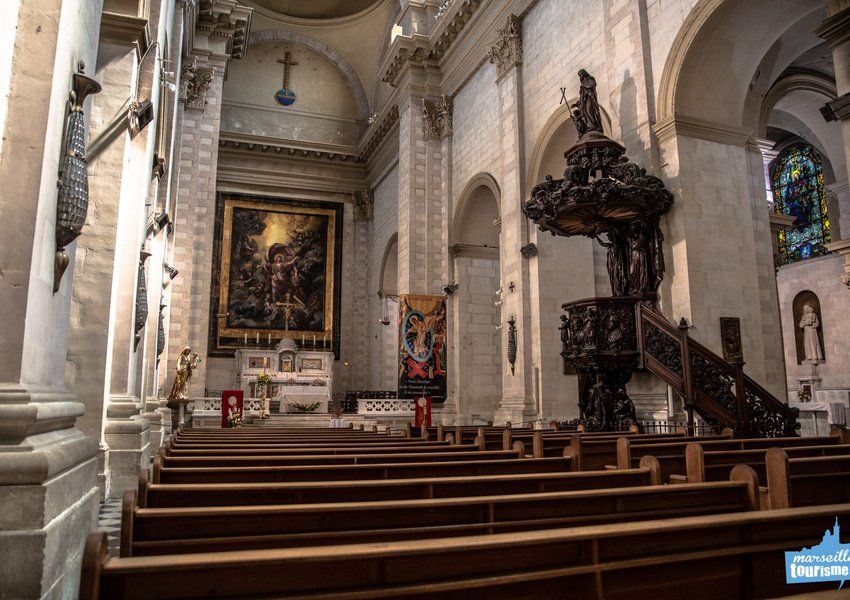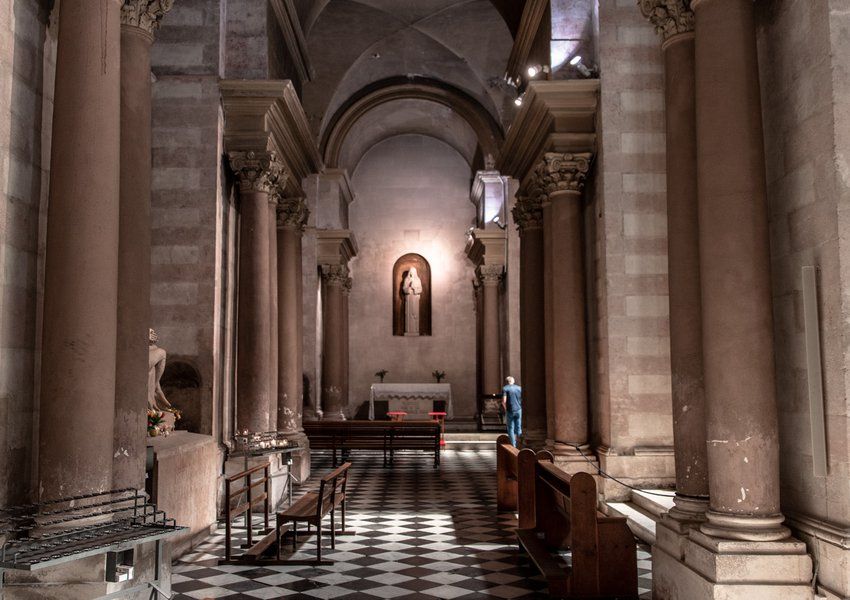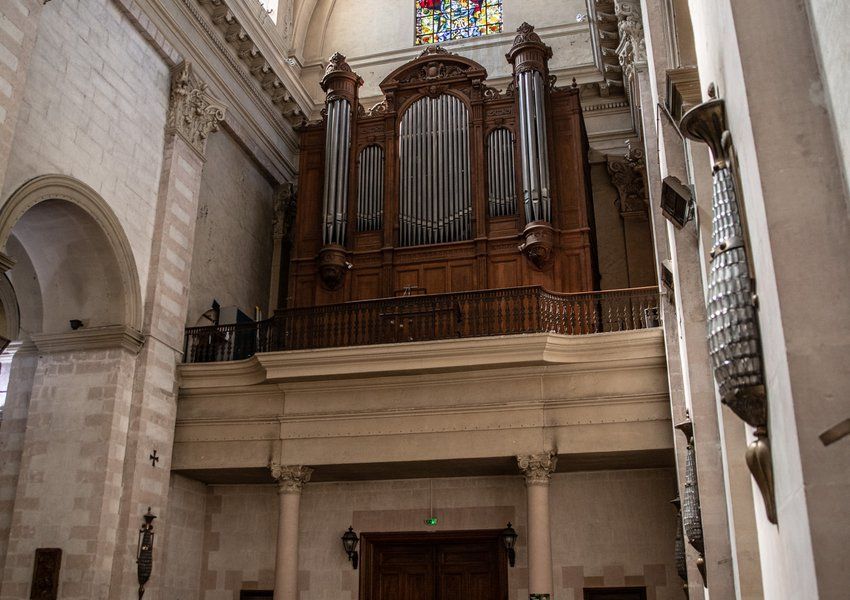Les Chartreux Church through history
The monastery
The Sainte Marie Madeleine des Chartreux Church was formerly the chapel of a monastery of the Order of the Carthusian monks, which gave its name to the district of the 4th arrondissement of Marseille.
The reason for the place is explained because it was an outlying part of the city and had a farmland domain near the Jarret brook. The first stone was laid on September 8, 1633 by Marshal de Vitry, then Governor of Provence. If construction began in 1633, financed by donations from many aristocratic families. The work of the church began in 1680. It ended with the consecration of the Bishop of Marseille in 1702. It is one of the oldest churches in Marseille. The Monastery consisted of 2 cloisters: one behind the Carthusian Church and a larger one, never finished. The monastery of the Carthusian monks then extended over nearly 11 hectares and the Church was one of the largest built under Louis XIV.
The Order of the Carthusians
The Carthusian monks is the most severe order in the Church. Founded by St Bruno in 1084, the Carthusian Community has the particularity to live both as a community and as a hermit. If they live together, the monks only talk to each other as little as possible. They also have very limited contact with the population and do not open the doors of their monasteries to the public. The monastery peak was reached in the 17th century and the monks had a quiet existence until the Revolution in 1703.
The Revolution marks the end of the Monastery
The period of the French Revolution represented a turning point for the monastery. Indeed, monastic vows were declared contrary to the Declaration of Human Rights and prohibited. About fifteen monks from the Carthusian community were disbanded. In 1790, the land was divided and sold by auction.
Les Chartreux Church
In 1883, Michel Serre's painting of Saint Mary Magdalene's Apotheosis was displayed in the choir of the church. It is the only painting in the monastery that could be saved. Les Chartreux Church regained a second life with the increase in population in the second half of the 19th century. Therefore, the mayor of the time called on a commission to study the problem due to the limited space in order to find a quick solution. The solution adopted was to drill the arches separating the nave from the aisles.
In 1952, the blast of the explosion of a nearby oil mill broke the stained glass windows of the side naves. This degradation will involve restoration work on the Church.
Massive and austere in appearance, it contains magnificent stained glass windows and an equally impressive massive organ. A 28.60 m wide peristyle is supported by 8 columns 10.60 m high, 8 bases are present above the columns. They were supposed to receive statues but due to lack of money they could not be installed on them. The facade of the church is 31 m long. The nave is very impressive with its 27 metres high.
Today
Despite being located outside the usual tourist circuits, Les Chartreux church is worth a visit because it is a masterpiece of 17th century classical art in Marseille. It is a soothing place, which makes Les Chartreux Church the ideal place to pray in Marseille. It is often compared with the Vieille Charité because they were built at the same time.
Did you know that the French writer Marcel Pagnol lived in the Chartreux district? His father was a teacher at the Collège des Chartreux.
If you come to visit Marseille, make a detour to Les Chartreux, you can admire this church steeped in the history of Marseille.



